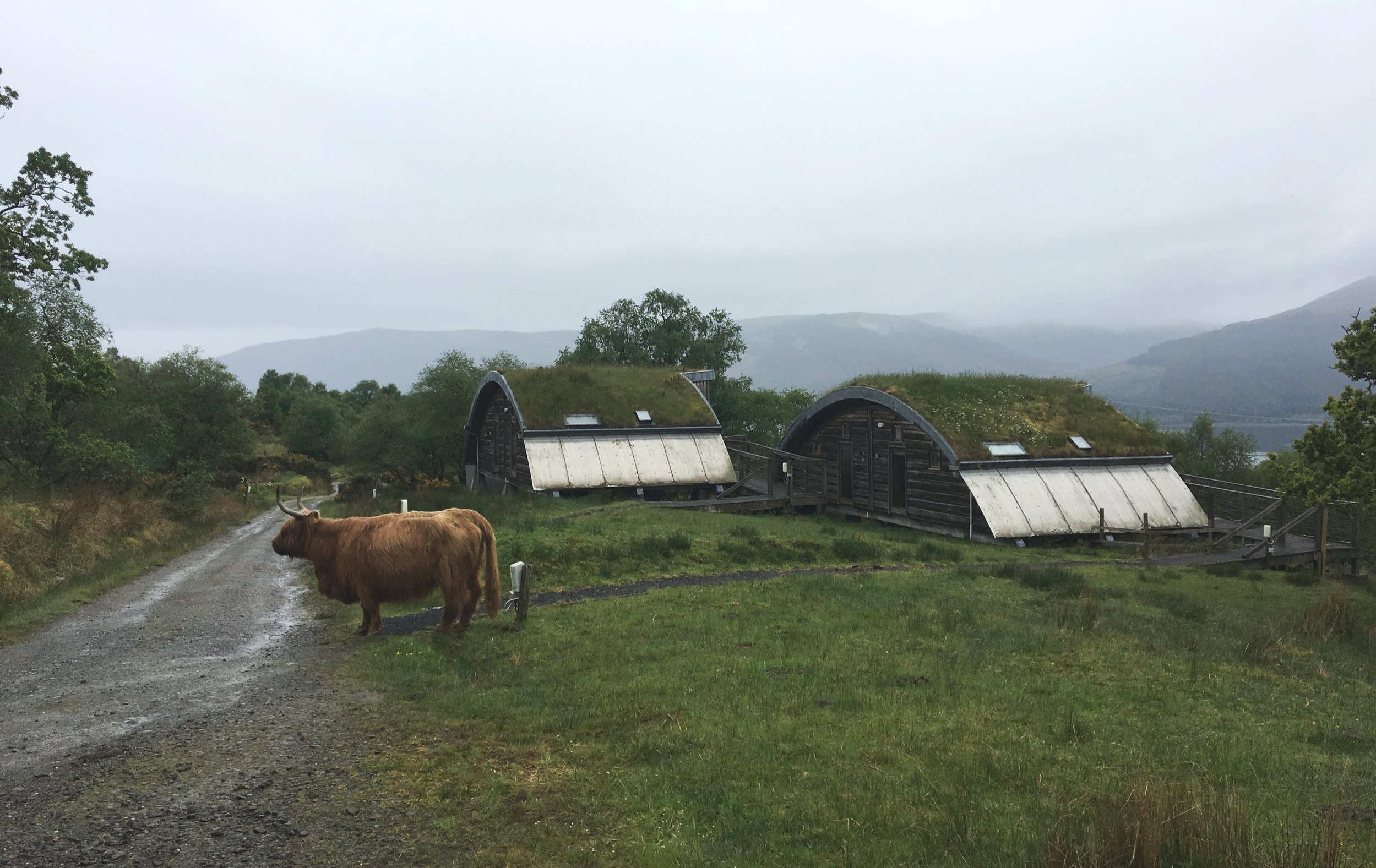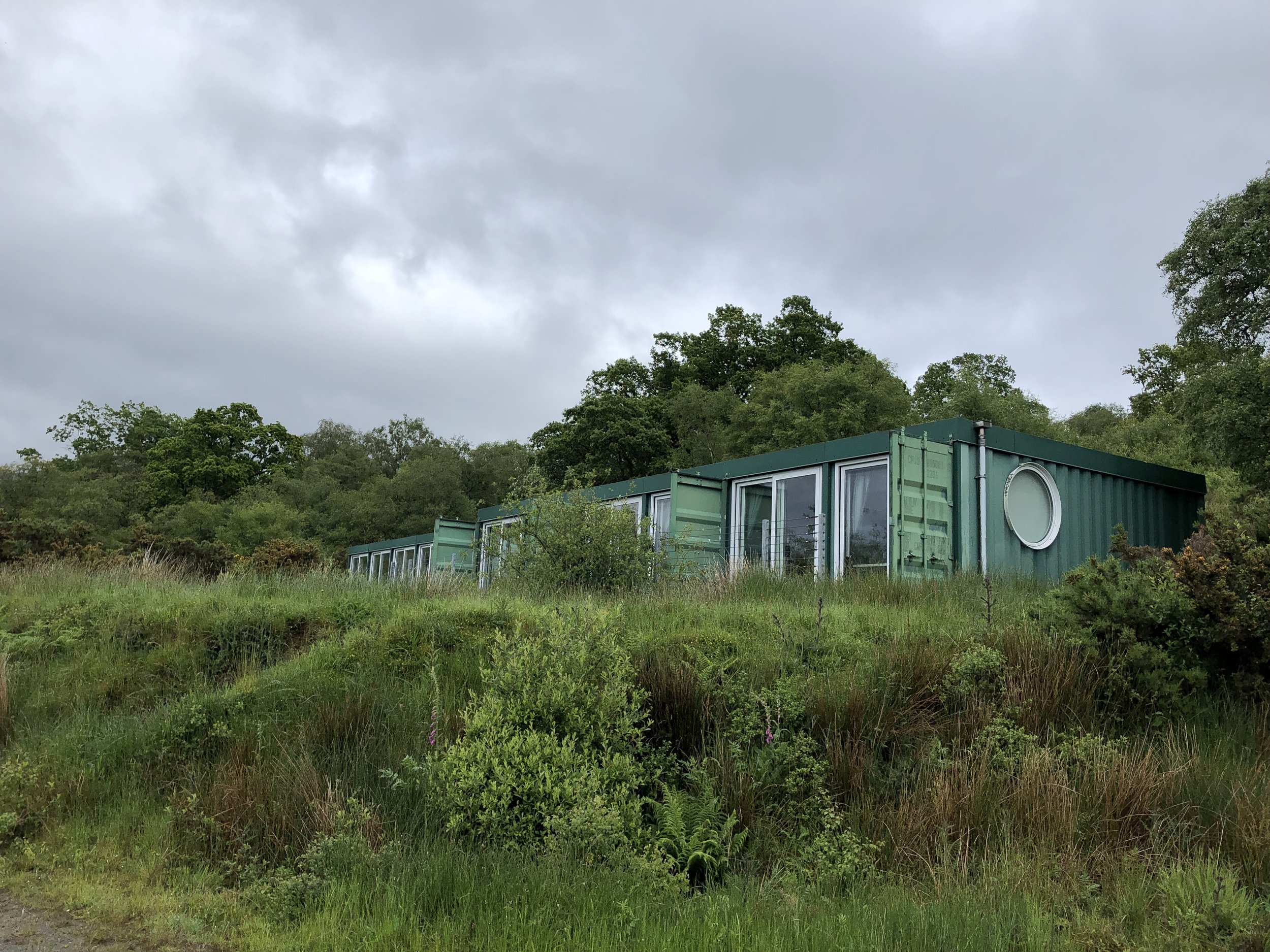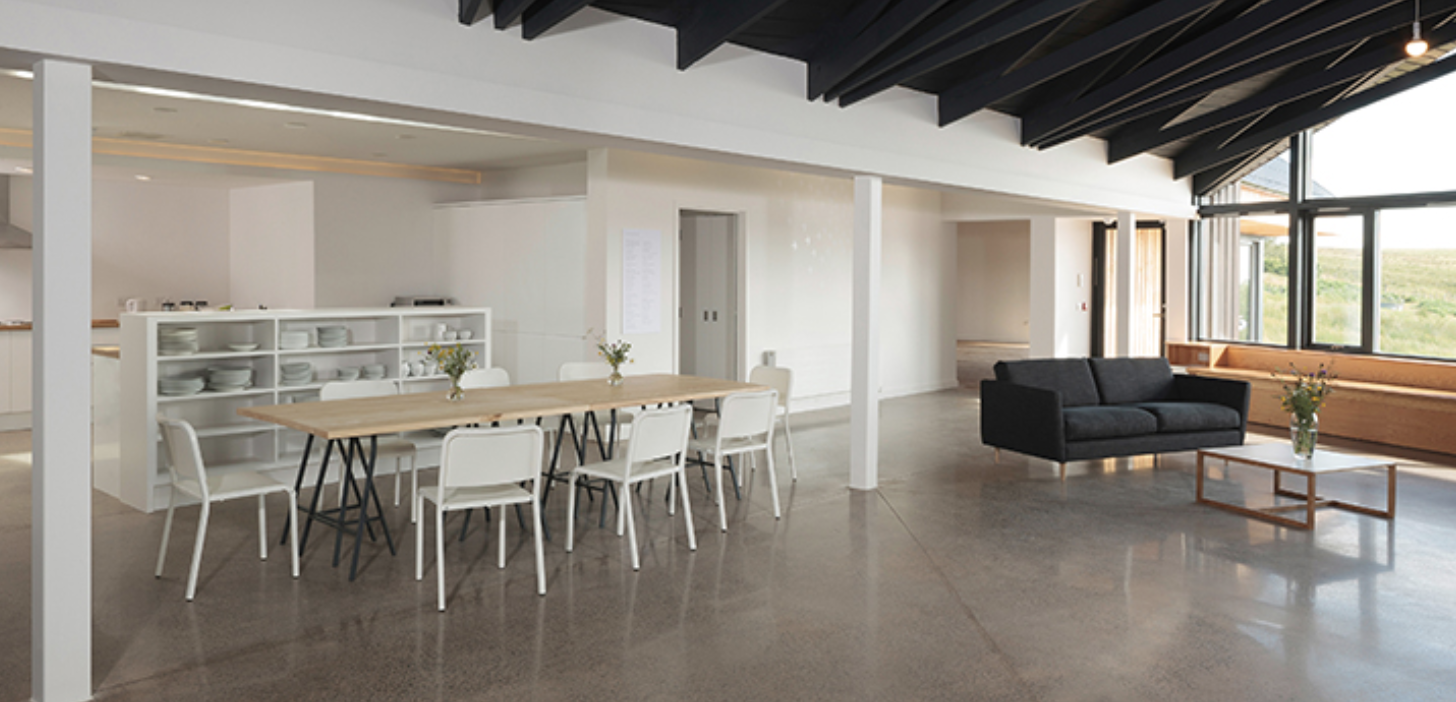INTERVIEW - Cove Park Artist Residency in Scotland
Cove Park is a unique offering amongst artist residencies, especially in the UK. Located on the west coast of Scotland, just 1 hour from Glasgow, it was founded by Peter and Eileen Jacobs, who, while traveling the world, were impressed by the many multi-disciplinary artist centers that supported and subsidized artists internationally.
Finding so few artist residencies in the UK, they set up Cove Park in 1999 as a charity funded by Creative Scotland, by trusts and foundations and by the generosity of individuals. Since 2000, Cove Park has hosted over 1,500 artists, including the distinguished author Margaret Atwood.
The Artist’s Center at Cove Park, overlooking Loch Long, Scotland.
I first visited Cove Park in the spring of 2017, a short stay that left me decidedly wanting more. Recently in May/June 2019, after a walking holiday through the highlands and islands of Scotland, I found myself staying in the nearby village of Ardpeaton, just a short walk to Cove Park.
So I made a visit to reconnect with the director Julian Forrester and the rest of the staff, all of whom are delightfully warm and engaging. I’ve long been wanting to interview the hosts of residencies so as to give another perspective, and they generously agreed to sit with me and share their thoughts and insights into how and why residencies are so critical to artists and the international arts culture. Read on!
The mists rolling in over Loch Long.
Julian Forrester - Director:
Although Scottish by birth, Julian spent all of his adult life in the US and Canada as a theatre producer and director. Julian returned to the UK in 1984 to run Anthony Quayle’s touring theatre company, Compass. He then became freelance, with Prudential Awards for the Arts, the Royal Opera House, Dean Clough, Northern Ballet Theatre and the Paul Hamlyn Foundation among his clients. He has been involved with Cove Park since 2000.
Views of Loch Long from the Artist’s Center.
Hello Julian, it’s a pleasure to see you again! Firstly, this part of Scotland is stunning, overlooking Loch Long in the Highlands just west of Glasgow. Why was this location chosen?
People thought we were dotty to set up the residency in this rural part of Scotland. But that was 20 years ago, and we have been offering this space to artists from around the world ever since - to make the world a bit better, a bit smaller.
And the location is perfect here - it’s just under an hour from Glasgow, the airport is nearby, and there is public transport. Yet it is miles from the city. It feels very remote but it isn’t. We have 50 acres of land that have never been cultivated. It was used by the American Navy during the second World War, but it doesn’t bear the stamp of people, it’s more wild. We want the artists to feel ownership of the place while they are here. In fact, the staff don’t live on site for that reason.
How is Cove Park different, and how do you see an artist residency impacting an artist’s career, their work and sensibility? Why are they important?
First of all, we never have any expectations for our artists to produce while they are here. In fact, the outcome of their time here might only show up 1-2 years down the road. It’s like planting seeds that might come to fruition later on. The impact might not be very literal, but will have smaller, more subtle shifts.
The beauty of residencies is that the interaction with new people and places and the work one does will never happen anywhere else. It’s an alchemy. And hopefully the artists leave with a sense of their own value, the affirmation that they are in the right place.
Cove Park has a very broad reach - from local Glasgow and Scottish arts institutions to further afield connections such as Tokyo and Venice, etc. How did these connections come to be?
The vision was always to invite artists from other cultures to bring new ideas, etc. And then, because of Brexit, we reached out to Europe to become more connected. We also became Involved with Scotland’s entry into the Venice Biennale and some cultural exchange programs with residencies in Japan. We have not had a huge number of American artists, mostly they have come from other parts of the world.
A view of the Artist’s Center on a sunny day, up the path from the Pods and Cubes.
You organize wonderful monthly dinner events that bring distinguished arts professionals to mingle with the artist residents. I find that to be a rare effort on the part of the residency to organize such high level interactions with the arts community. How have these people come to be involved?
Many of these people are previous connections I made through working in the London theater. And we have tentacles everywhere in the art world through our board members, fundraising efforts, being on various panels etc. The thing is you must be out and about connecting all the time. So the monthly dinners are a way of bringing people to US, as it’s impossible to describe this place unless people come here and see it for themselves. Once they do, they become much more involved.
Do you see many changes in the direction of the arts in the years you have been involved?
So much of the art world is defined by public funds, but I think it was ever thus. Fortunately we’ve been very lucky with Creative Scotland and other donors, that they were able to see the value of this place and help support what we do.
It does seem like the pursuit of excellence is now more about political or social aims. But if we move away from the support of the arts from public funds, we lose many important artists and organizations. They crash. So we try to be self-sufficient by interacting with the community - now we are bringing younger students in for workshops with the artists called the Hands-On program. This expands our reach and also brings in new funding.
The sod-roofed Pods with shaggy Highland Cow.
Alexia Holt: Associate Director & Visual Arts Program Producer
Alexia Holt has worked at Cove Park since 2004 and produces its international program of visual arts residencies and commissions. Prior to Cove Park, she was Curator at Tramway, Glasgow. A graduate of Glasgow University’s History of Art department, she also worked at Glasgow School of Art and the CCA whilst completing a Ph.D. on early twentieth century fashion design. As Curator for the Scottish Print Network she recently developed ‘Below another sky’: an international program of residencies, exhibitions and events for Scotland’s five print studios.
Hi Alexia! What do you look for in artists and their proposals. How do you decide who you will select for a funded residency?
We get many more applications than we can possibly consider, so it’s mostly the quality of the work and a well expressed application. It’s also important to understand the context of this place and how it might work for them.
Through the selection process, we always interview the final applicants by Skype. It’s important that they know that this is not a retreat - it’s a community. We are not hiding away here - it’s very connected. They must be willing to interact with other artists in some way.
We are very involved in curating the mix of people - different ages and stages of their careers, nationalities, etc. Not many residencies really consider the human dynamics of the group. We feel it’s our responsibility to think about how the artists will interact and benefit from each other.
The Cubes - individual self catering living spaces in shipping containers.
That said, we have a light touch with our residents - everyone can do as they will, and they have a lot of privacy to work on their projects. Yet we encourage interactions such as group meals etc.
Unfortunately at this time we don’t accept international applications for the funded visual arts anymore because we became overwhelmed with the number of applications. So now we have an international advisory board who will nominate artists. We only have a few funded residencies per year. And now we only allow UK residents for some of the open calls.
(International artists can apply for a self-funded residency however)
What are a few of the outstanding projects you have accepted?
We had a wonderful Mexican artist here for 6 months. He was the perfect resident, very hard working and generous with his time. He and 3 other artists made a huge amount of work, and they continued to keep the conversation going about their work over the years. They even wrote catalogs for each other’s shows.
There was another artist, Simon Starling - his project was to build a wooden boat with a boiler. And as it was sailing on Loch Long, he was taking it apart and feeding the wood to it’s own boiler, so it was a self-eating boat that eventually consumed itself! He also documented the whole project and gave an artist talk, and a workshop to primary school children. And then it went on to tour internationally.
Sometimes we will commission artists to create a site specific work for a temporary period of time. And then other times the emphasis is not on producing but rather incubating ideas, reading etc.
Meeting some of the red haired locals.
What advice would you give to artists interested in applying to residencies in general and to Cove Park?
When applying, please do your research. There are so many different kinds of residencies. Maybe contact artists who have been to that residency before. If possible, try to make the project relate to that particular place.
And for us, you don’t always need to have a defined project - just be honest about what you want to do. Be yourself. Cut through the art speak. No one wants to waste time, and applications take a lot of time. Streamline the process as much as possible. So be considerate, and make sure to get the name of the residency organization right! (It seems that some applicants have not!)
Looking through the Artist’s Center meeting room to a writer’s station overlooking the Loch.
Have you seen many changes to the direction of visual arts as a whole - in terms of applications?
We certainly get more applications than ever before for the funded residencies. Artists often struggle financially so it’s understandable that they are looking for free opportunities.
We also find more artists want to work collaboratively with another artist. We created a theme of a collaborative residency called “one to one”, for those wanting to explore that possibility.
Unfortunately, much of the public funding has dried up, so that has affected the applications we get. For example, many Scottish art schools closed their ceramic programs, so we received a big upswing of ceramic applications. Also craft and other makers programs closed so we have more of those applications.
We do try to respond to movements we see in the arts world that are reflected in the applications.
It does seem like more artists are working with text, publications, which is interesting. And of course the moving image is increasingly popular - experimental film, as well as Web-based projects and Virtual Reality. But many people don’t want to be in this beautiful environment and then be on their computers too much!
The interior of the Artist’s Center open plan living room, dining room and kitchen.
You can learn more about funded and self-funded residencies at Cove Park on their website, go to: www.covepark.org
And to learn more about artist residencies, check out my online course by clicking the button below:










